Musique concrète is a type of music composition that utilizes recorded sounds as raw material. Sounds are often modified through the application of audio signal processing and tape music techniques, and may be assembled into a form of sound collage. It can feature sounds derived from recordings of musical instruments, the human voice, and the natural environment as well as those created using sound synthesis and computer-based digital signal processing. Compositions in this idiom are not restricted to the normal musical rules of melody, harmony, rhythm, and metre. The technique exploits acousmatic sound, such that sound identities can often be intentionally obscured or appear unconnected to their source cause.
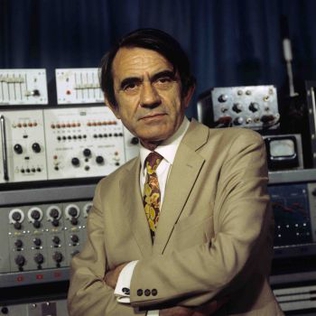
Pierre Henri Marie Schaeffer was a French composer, writer, broadcaster, engineer, musicologist, acoustician and founder of Groupe de Recherche de Musique Concrète (GRMC). His innovative work in both the sciences—particularly communications and acoustics—and the various arts of music, literature and radio presentation after the end of World War II, as well as his anti-nuclear activism and cultural criticism garnered him widespread recognition in his lifetime.

Luc Ferrari was a French composer of Italian heritage and a pioneer in musique concrète and electroacoustic music. He was a founding member of RTF's Groupe de Recherches Musicales (GRMC), working alongside composers such as Pierre Schaeffer and Pierre Henry.

IRCAM is a French institute dedicated to the research of music and sound, especially in the fields of avant garde and electro-acoustical art music. It is situated next to, and is organisationally linked with, the Centre Pompidou in Paris. The extension of the building was designed by Renzo Piano and Richard Rogers. Much of the institute is located underground, beneath the fountain to the east of the buildings.
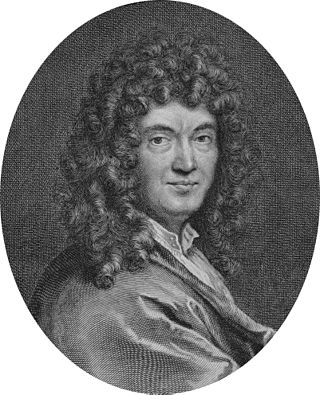
Claude Perrault was a French physician and an amateur architect, best known for his participation in the design of the east façade of the Louvre in Paris. He also designed the Paris Observatory and was an anatomist and author, who wrote treatises on architecture, physics and natural history.
Electroacoustic music is a genre of popular and Western art music in which composers use technology to manipulate the timbres of acoustic sounds, sometimes by using audio signal processing, such as reverb or harmonizing, on acoustical instruments. It originated around the middle of the 20th century, following the incorporation of electric sound production into compositional practice. The initial developments in electroacoustic music composition to fixed media during the 20th century are associated with the activities of the Groupe de recherches musicales at the ORTF in Paris, the home of musique concrète, the Studio for Electronic Music in Cologne, where the focus was on the composition of elektronische Musik, and the Columbia-Princeton Electronic Music Center in New York City, where tape music, electronic music, and computer music were all explored. Practical electronic music instruments began to appear in the early 20th century.

François-Bernard Mâche is a French composer of contemporary music.
Acousmatic music is a form of electroacoustic music that is specifically composed for presentation using speakers, as opposed to a live performance. It stems from a compositional tradition that dates back to the origins of musique concrète in the late 1940s. Unlike acoustic or electroacoustic musical works that are realized from scores, compositions that are purely acousmatic often exist solely as fixed media audio recordings.
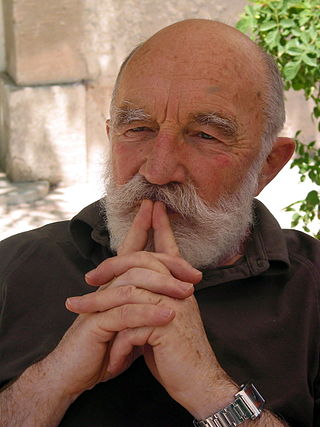
Bernard Parmegiani was a French composer best known for his electronic or acousmatic music.
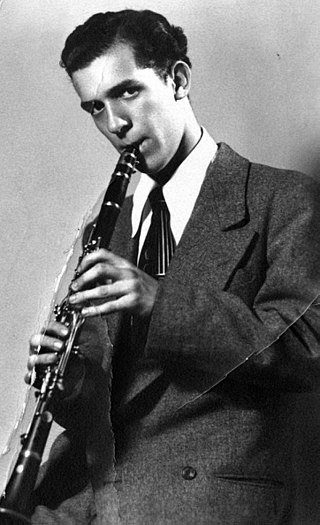
Albert Antonio Serge Garant, was a Canadian composer, conductor, music critic, professor of music at the University of Montreal and radio host of Musique de notre siècle on Radio-Canada. In 1966, he with Jean Papineau-Couture, Maryvonne Kendergi, Wilfrid Pelletier and Hugh Davidson co-founded the Société de musique contemporaine du Québec. In 1979, he was made an Officer of the Order of Canada. The Prix Serge-Garant was created in his honor by the Fondation Émile Nelligan. Among his notable pupils were Ginette Bellavance, Walter Boudreau, Marcelle Deschênes, Denis Gougeon, Richard Grégoire, Anne Lauber, Michel Longtin, Myke Roy, and François Tousignant.

Batztoutai with Memorial Gadgets is a double album by the Japanese noise musician Merzbow. It was later remixed and reissued in 1993 as Batztoutai with Material Gadgets: De-Composed Works 1985~86.
Christian Calon is a French-born Canadian composer who is active in electroacoustic music. He has worked extensively in large computer-based studios in Canada and Europe and has received commissions from the Canada Council, the Groupe de Musique Expérimentale de Marseille, and the Ministère des Affaires culturelles du Québec. His work is written in an expressionist and narrative style and his pieces are characterized by acousmatic diffusion.
François Bayle is a composer of Electronic Music, Musique concrète. He coined the term Acousmatic Music.
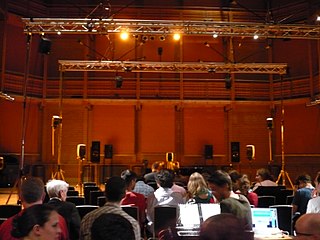
Birmingham ElectroAcoustic Sound Theatre, or as it is more commonly known, BEAST, is a sound diffusion system specifically designed for the performance of electroacoustic music. It is a long-running project of the Electroacoustic Music Studios at the University of Birmingham, founded in 1982 under the directorship of Jonty Harrison. Since 2014 BEAST has been directed by Scott Wilson, along with Annie Mahtani and James Carpenter as technical director. Simply put, it consists of a set of loudspeakers connected to a computer, usually controlled by a diffusion console.
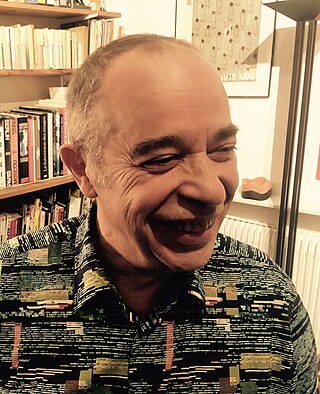
Jean-Jacques Birgé is an independent French musician and filmmaker, at once music composer, film director, multimedia author, sound designer, founder of record label GRRR. Specialist of the relations between sound and pictures, he has been an early synthesizer user and with Un Drame Musical Instantané, an initiator of the return of silent movies with live orchestra in 1976. His records show the use of samplers since 1980 and computers since 1985.

The Philharmonie de Paris is a complex of concert halls in Paris, France. The buildings also house exhibition spaces and rehearsal rooms. The main buildings are all located in the Parc de la Villette at the northeastern edge of Paris in the 19th arrondissement. At the core of this set of spaces is the symphonic concert hall of 2,400 seats designed by Jean Nouvel and opened in January 2015. Its construction had been postponed for about twenty years to complete the current musical institution la Cité de la Musique designed by Christian de Portzamparc and opened in 1995. Mainly dedicated to symphonic concerts, the Philharmonie de Paris also present other forms of music such as jazz and world music.
Musique(s) électronique(s) : les bruitistes et leur descendance is a documentary film shot between 2010 and 2012 by filmmaker Jérémie Carboni.

Helter Skelter is a 1992 rock opera by Fred Frith and François-Michel Pesenti. It was their first collaborative album and was recorded in Marseille, France, in February 1992. The music was composed by Frith, with libretto by Pesenti, and was conducted by Frith and Jean-Marc Montera. Frith and Pesenti do not perform on this album.
Edith Alonso Sánchez is a Spanish composer, improviser, pianist, sound artist and academic who has been involved in the creation of an experimental electronic style that incorporates spoken word, musical sound and visual imagery. She has received a number of awards for her work.
Sound diffusion is a performance practice in the field of acousmatic music. According to composer and theorist Denis Smalley, it describes the "projection and the spreading of sound in an acoustic space for a group of listeners" during a concert. These concerts can be seen as acoustic recitals without performers, where sound is exclusively generated by loudspeakers. In many cases, the sound diffusion is performed by the composer themselves, whose task it is to integrate and interpret the music within the concert space.












